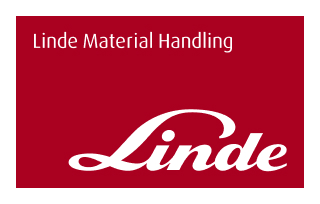Forklift tynes, often referred to as forks, are essential components of material handling equipment. Whether you're operating a warehouse, construction site, or logistics hub, understanding forklift tynes can improve safety, efficiency, and productivity. This guide will walk you through the key aspects of forklift tynes, including terminology, types, safety considerations, and maintenance tips.
Common Forklift Tyne Terminology
Before diving into specifics, it's essential to understand the common terms related to forklift tynes:
- Tynes/Forks – The horizontal arms that lift and carry loads.
- Heel – The curved area where the tyne transitions from the vertical shank to the horizontal blade.
- Blade – The horizontal section that supports the load.
- Shank – The vertical section that attaches to the forklift carriage.
- Carriage – The frame where the tynes are mounted.
- Load Centre – The distance from the vertical face of the tyne shank to the centre of the load.
- Tyne Class – A classification system based on carriage height and mounting method.
How Forklift Tynes Are Made
Forklift tynes are manufactured from high-strength steel to ensure they can handle heavy loads without bending or breaking. The process generally involves:
- Forging or Rolling – High-quality steel is shaped into the desired fork structure.
- Heat Treatment – Tynes undergo heat treatment to increase strength and durability.
- Machining and Finishing – The tynes are cut, drilled, and finished for precise fitting.
- Testing and Certification – Forklift tynes are rigorously tested to ensure they meet industry standards.
How to Read Forklift Tyne Dimensions
Understanding forklift tyne dimensions is crucial when replacing or upgrading forks. The key measurements include:
- Length (L) – The measurement from the tip of the blade to the shank.
- Width (W) – The horizontal width of the blade.
- Thickness (T) – The thickness of the blade for weight capacity.
- Mounting Class – The classification indicating the correct fit for the forklift carriage.
Other Forklift Fork Measurements
Apart from the standard dimensions, several other measurements impact performance:
- Load Capacity – The maximum weight the tynes can safely lift at a specific load centre.
- Blade Tapering – Some forks have tapered tips to slide under loads easily.
- Hook vs. Pin Type – Determines how the forks attach to the carriage.
- Tyne Positioning – Adjustable forks allow for greater flexibility when handling different load sizes.
Types of Forklift Tynes
Different applications require different types of forklift tynes. Some common types include:
- Standard Forks – The most common type used in general material handling.
- Pallet Forks – Designed for handling pallets with reinforced tips.
- Block Forks – Thinner and wider forks used for handling bricks and blocks.
- Shaft-Mounted Forks – Designed for rough terrain forklifts.
- Telescopic Forks – Extendable forks that provide greater reach.
- Coil Handling Forks – Forks with a concave design to handle rolled materials.
- Drum Handling Forks – Specially shaped forks to handle barrels and drums safely.
Forklift Tyne Wear: Limits, Causes, and Prevention
Understanding the causes of forklift tyne wear and knowing how to prevent this from happening can help prolong their lifespan.
Wear Limits
- Forklift tynes should be replaced when wear exceeds 10% of the original thickness.
- Cracks, bends, or significant corrosion also indicate the need for replacement.
Common Causes of Wear
- Overloading beyond the rated capacity.
- Dragging forks on the ground.
- Repetitive impacts against hard surfaces.
- Poor maintenance practices.
Prevention Tips
- Regular inspections to check for wear and damage.
- Avoid dragging or scraping the tynes.
- Use the correct forks for each application.
- Adhere to manufacturer weight limits and handling guidelines.
Forklift Tyne Safety Tips
Ensuring forklift tynes are used safely prevents workplace accidents and equipment damage. Follow these essential safety tips:
- Always inspect tynes for damage before use.
- Never exceed the load capacity or adjust load centre improperly.
- Ensure forks are evenly positioned for balance.
- Avoid sudden stops or sharp turns when carrying loads.
- Train operators to recognise early signs of wear and damage.
Forklift Tyne Dos and Don’ts
Dos
- Inspect forklift tynes regularly for damage and wear.
- Ensure tynes are securely attached before operating.
- Distribute loads evenly across both forks.
- Follow manufacturer guidelines for load capacity.
- Replace worn tynes to maintain safety and efficiency.
Don’ts
- Do not use damaged or worn-out tynes.
- Do not overload or improperly balance loads.
- Do not modify tynes without manufacturer approval.
- Do not drag forks along the ground.
- Do not ignore warning signs of wear, such as cracks or bends.
Get Assistance with Your Forklift Tynes Today
Selecting and maintaining the right forklift tynes is essential for workplace safety and operational efficiency. If you're unsure about the right forks for your forklift, need replacements, or require expert advice, contact Linde today. Our team can help you find the best solutions for your material handling needs.
CONTACT US

